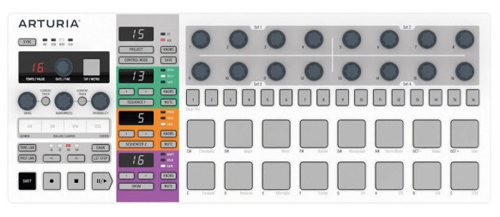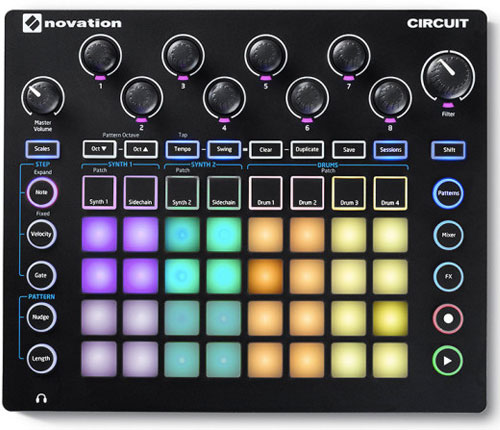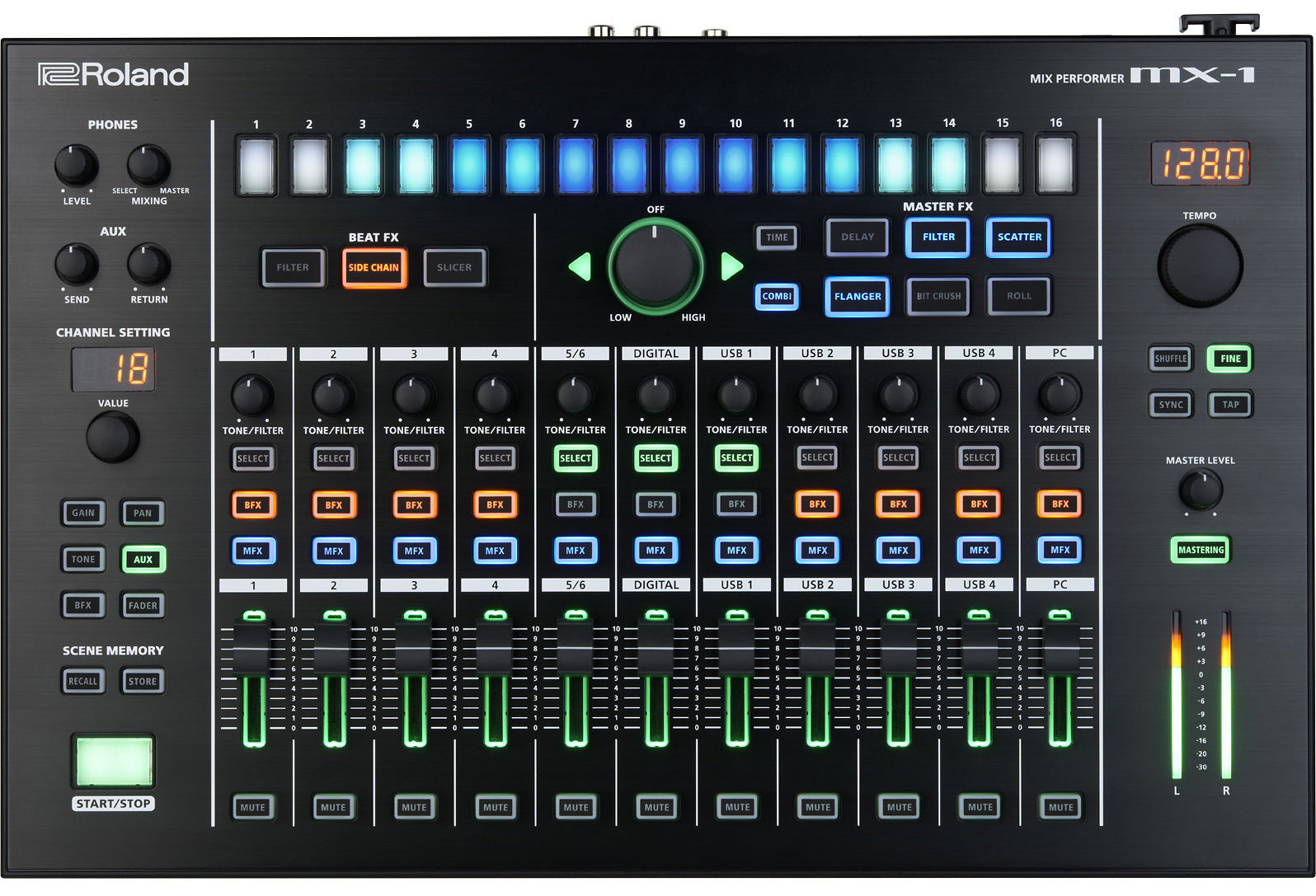As electronic music continues to expand in popularity, one piece of gear has proven particularly divisive among both genre fans and detractors alike: the laptop. Through the ‘80s and ‘90s, gear designers packed more computing power, larger screens and PC-like functionality into electronic instruments. The ubiquity of personal computers in the 2000s inevitably led to an increasing number of tools being created specifically for that platform. As more software-based workstations, virtual synths and sample libraries became available, tensions between users of laptops and dedicated electronic-music machines developed.
Nevertheless, the quality of in-the-box tools continued to increase, until their power, flexibility and affordability finally began to overtake their hardware counterparts. While these changes were underway, web-based services for music sharing were beginning to mature. Soundcloud and Bandcamp emerged as robust platforms for self-publishing everything from a daily song sketch to an entire album. Meanwhile music blogging underwent a renaissance as a generation of Pitchfork readers entered college and embraced social media. At the dawn of the 2010s, these simultaneous social and technological trends in electronic music pushed the humble laptop into the spotlight.
RELATED ARTICLE
There’s no arguing with the flexibility, speed and production detail possible with a laptop, but as these machines have become fixtures on the stages of DJs, producers and many modern bands, a backlash is emerging. Fans and producers alike are voicing concerns that laptops disconnect artists from their performance, or at least present that appearance. Other artists, such as Holly Herndon, have defended laptops as extremely personal instruments, as they are often intertwined with every aspect of the artist’s life, even beyond music creation.
Either way, this shift has generated renewed interest in creating electronic music without computers, and major gear builders have started to take notice. A new crop of affordable tools for jamming, sequencing and arranging electronic instruments has emerged this year. Here we’ll take a look at three contenders looking to knock your laptop out of the top spot.
Arturia BeatStep Pro

Arturia’s BeatStep Pro is the most affordable of these devices, but its power and portability have made it a Reverb staff favorite. It pairs two melodic sequencers and a drum sequencer with banks of 16 endless encoders and velocity-sensitive pads for hands-on creation and tweaking. A selection of 16 projects store your sequences, with each project capable of storing 16 sequences for each melodic sequencer and 16 drum sequences. Each sequence can contain up to 64 steps with full control over pitch, velocity and gate time. A full array of individual outs for drum triggering and CV control, plus MIDI and USB I/O, let your sequences take control of any gear under the sun, from vintage synths to bleeding edge modular units. The BeatStep Pro puts unprecedented hardware-sequencing power into a form factor you can throw in your backpack, and at a price working musicians can afford.
Novation Circuit

The newest entry into this growing field, the Novation Circuit combines standalone functionality and sequencing power to form an instrument that’s equally capable of sketching out a full track on its own or being the command center of an entire rig. It features an internal two-part virtual analog synth based on Novation’s Nova architecture that sports six-voice polyphony, so harmonic, melodic and arpeggiated lines are all feasible. A four-part drum machine rounds out the rhythmic side of the fence, and 128-step sequencers give you plenty of room to flesh out complex, evolving arrangements. A bank of 32 velocity-sensitive, RGB lit pads and eight LED-ringed encoders give you hands on control to intuitively play, sequence and tweak sounds. Dedicated MIDI I/O and USB connection allow it to drive any hardware you can throw at it, or plugin to a laptop if you find yourself wanting to reconnect to your old standby. Most impressively, it includes a built-in speaker and battery power so you can really get off the grid and jam with it anywhere.
Roland MX-1

The MX-1 takes a different approach in stepping away from the screen, offering a performance-oriented mixer with syncable effects and scenes. It particularly shines when paired via USB with other AIRA units, like the TR-8, but is capable of mixing audio from six line-level inputs on its own. The Roland-style sequencer lights at the top keep you visually cued in to the tempo of your tracks, while super bright buttons and meters keep you apprised of levels and other mix elements even on a dark stage. A bevy of master effects is completely sequenceable and switchable on a per-track basis, allowing you to integrate the mixer into your performance. Hardware sends and returns allow you to integrate outboard effects as well. When you’re ready to hit the stage, you can save an entire setlist’s worth of mix configurations as a preset on a per-song basis. While it may be pricey for a mixer, if you’re considering going computer free it’s worth a deeper look, and if you’re running a TR-8 or other AIRA gear, it’s essential.
Whether jamming and arranging in the studio or mixing and sequencing for the stage, the options for stepping away from the screen for a hands-on connection are more plentiful and powerful than ever before. All the gear detailed here retains a USB port and capable DAW-based control, though, so it’s important to note that the computer isn’t going anywhere. But even if you produce completely in-the-box, injecting the immediacy and unpredictability of live jamming and tactile control into the performance and production of electronic music only stands to strengthen these genres for artists and fans.

